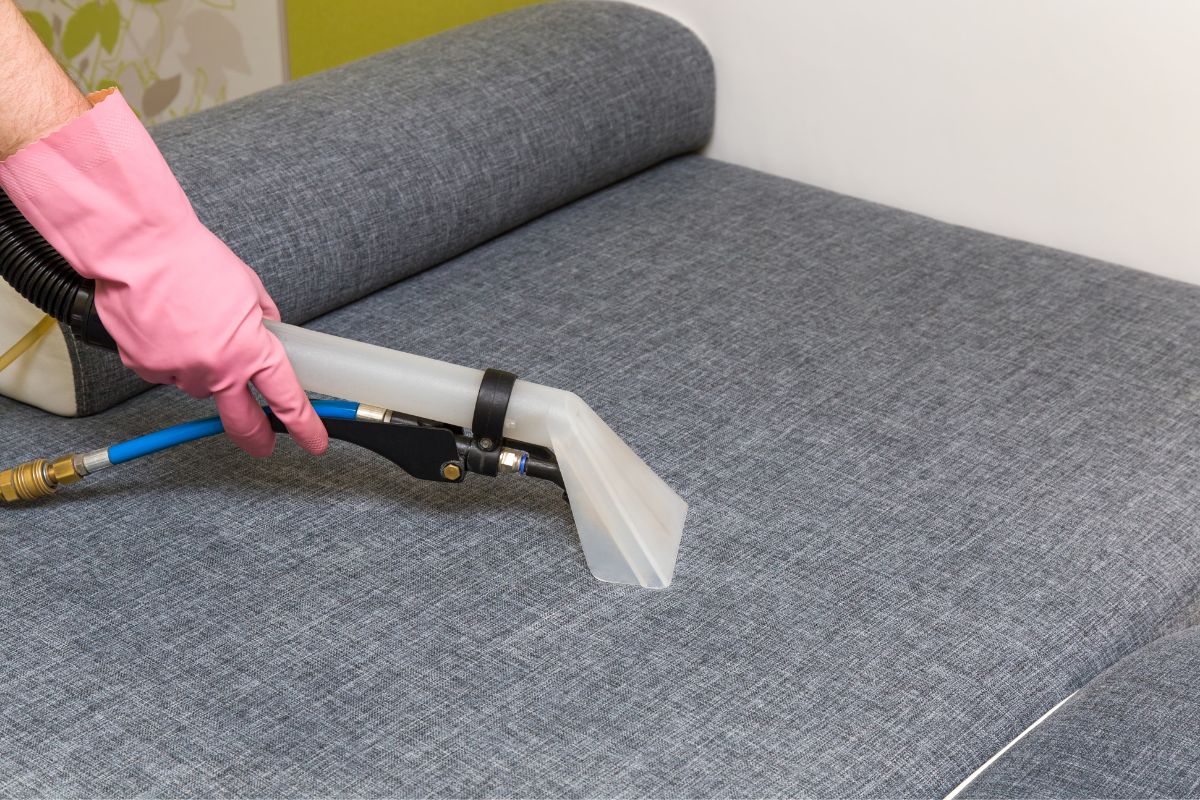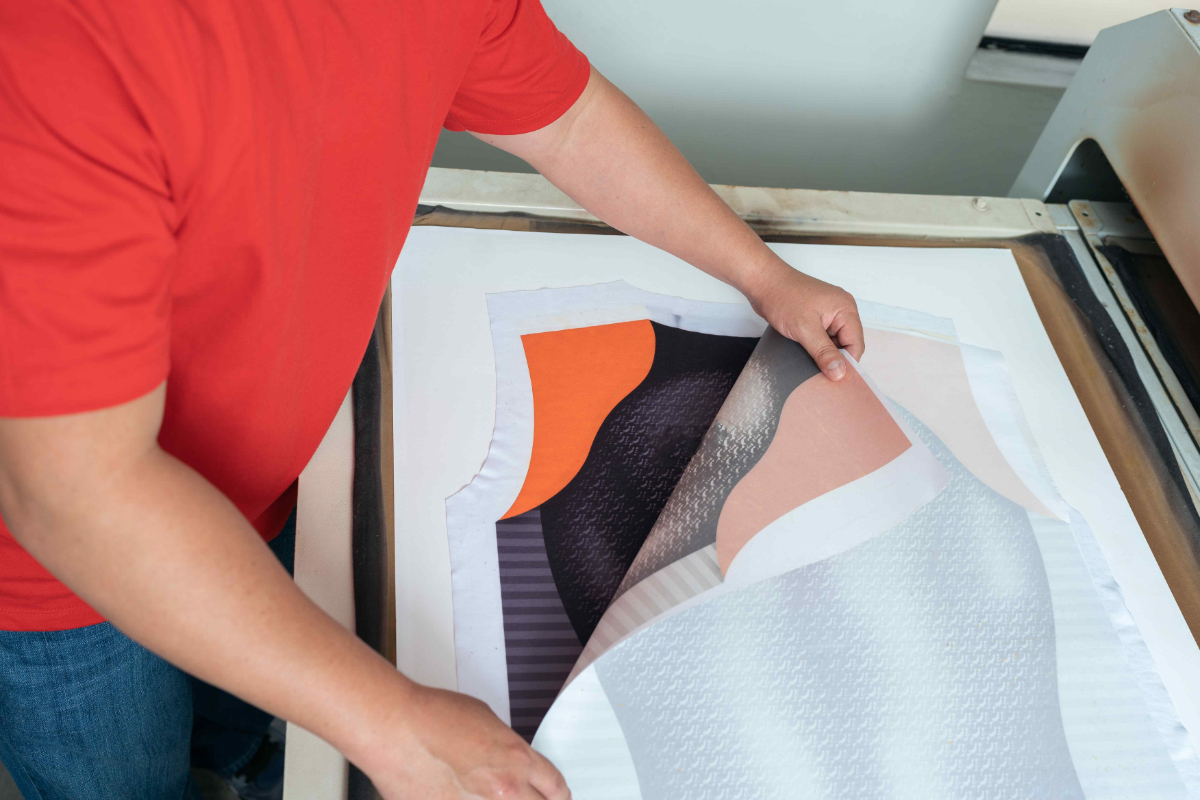When it comes to maintaining the life and appearance of polyester fabrics, understanding how to stretch them correctly is essential. Polyester is a synthetic fiber known for its durability and resistance to shrinking and stretching under normal circumstances. Typically, polyester garments hold their shape well, but there are situations where you might need to stretch a polyester fabric, whether to fit more comfortably or to realign it after sewing or washing.
Stretching polyester fabric requires a gentle approach to prevent damage. Since polyester is heat-sensitive, applying moderate heat can make the fibers more pliable. The process involves using warm water or a warm iron, but it’s crucial to avoid applying too much heat to prevent melting or distorting the fabric. By managing the warmth and tension applied, you can stretch polyester effectively while maintaining the integrity of the fabric.
Understanding Polyester Fabric
Polyester fabric is a synthetic material renowned for its durability and ease of maintenance. As you delve into its world, it’s important to note its unique characteristics, how it compares to natural fibers, and the varieties of items made from it.
Characteristics of Polyester Fibers
Polyester fibers are synthetic polymers made from polyethylene terephthalate (PET). They exhibit high strength, considerable stretch, and durability. Their resistance to shrinking and wrinkling is notable, offering a convenient option for everyday wear. Moreover, polyester is known for its ability to retain shape and withstand various environmental factors, making it a favorite in the textile industry. These fibers are also quick-drying, which is essential for items like swimwear and activewear.
Comparison with Natural Fibers
Compared to natural fibers like cotton and wool, polyester stands out due to its synthetic nature. Unlike cotton, which is breathable and soft, polyester is not as air-permeable, potentially making it less comfortable in warm conditions. However, polyester outperforms wool and cotton in durability and moisture-wicking abilities. In blended fabrics, combining polyester with natural fibers can enhance the texture, performance, and longevity of products like t-shirts and leggings.
Common Polyester Items
Your wardrobe likely contains a multitude of items crafted from polyester. This includes polyester clothes such as t-shirts and polyester dresses or skirts. Polyester’s versatility doesn’t end with clothing; it extends to footwear with polyester shoes, proving the fabric’s adaptability. The textile’s traits make it ideal for a range of products, offering a balanced mix of function and form across various categories, from casual wear to specialized garments.
Preparation for Stretching

Before beginning the stretching process, ensure you have the right tools and have assessed how much stretch your polyester garment needs.
Selecting the Right Tools and Materials
To properly stretch polyester fabric, you’ll require specific tools and materials to prevent damage and achieve the optimal stretch. First, gather a clean spray bottle which will be used to apply a mixture of water and fabric softener; this solution helps relax the fibers. Choose a fabric softener that’s appropriate for synthetic fibers. Additionally, prepare a flat surface where you can lay out the polyester item, such as a clean table or countertop, covered with clean towels to absorb excess moisture. For more precise stretching, especially around areas like the sleeves or neckline, consider using a form or mannequin that matches the desired size and shape.
Analyzing the Degree of Stretch Required
Inspect your polyester shirt carefully to determine how much stretching it requires. For targeted areas such as the sleeves or neckline, you’ll need to decide how much extra room is needed—this is typically measured in inches. If you’re aiming for an overall size increase, decide on a percentage by which to increase the dimensions. Keep in mind that polyester is a resilient material that tends to return to its original size unless a conditioning agent, like hair conditioner mixed with warm water, is used during a soak. This method allows for a more permanent stretch when followed by a proper wash cycle. Remember to avoid using hot water as extreme temperatures can set wrinkles and cause shrinkage—cold water is safer for both soaking and rinsing your garment.
Various Stretching Techniques

When it comes to stretching polyester, the method you choose can affect the material’s final properties. Whether you’re seeking to increase elasticity or ensure the fabric retains its shape, different techniques offer unique benefits catered to your specific needs.
Heat-Induced Stretching Methods
Heat-induced stretching uses high heat to alter the fibers of polyester, thus allowing them to stretch. It’s critical to find the right balance; too much heat can shrink the fabric or damage its elasticity. To begin, preheat your iron to a low temperature setting suitable for polyester. Carefully iron the fabric to relax the fibers before stretching. This method helps if you need to stretch a polyester shirt slightly to a more comfortable size. You can then air-dry the garment to preserve the stretching effect.
- Heat Application: Carefully apply the iron to polyester
- Temperature: Low, to prevent shrinking
- Drying: Air-dry to maintain stretch
Manual Stretching Approaches
Manual stretching requires physical manipulation of the polyester. Lay your item on a flat surface, and use your hands to evenly stretch the material. For added weight, place heavy items at the edges after stretching to maintain the desired shape while it dries. This approach is beneficial for minor alterations in the fit of polyester garments.
- Lay garment flat.
- Stretch evenly with hands.
- Place weights to hold the stretch.
- Air-dry.
Wet Stretching Technique
Wet stretching involves soaking the polyester item in water prior to stretching. Immerse your garment in warm water and let it soak thoroughly. You can then stretch the material by hand or use weights to hold the stretch. Wring out the excess moisture gently and then proceed to air-dry the item. This process allows the fibers to relax and expand without the risks associated with heat.
- Soak: Immerse in warm water.
- Stretch: Apply manual stretching or use weights.
- Dry: Wring gently and air-dry.
Maintaining the Stretch

After you have successfully stretched your polyester fabric to the desired size and shape, it is imperative to secure the stretch properly and choose the right drying method to maintain a comfortable fit.
Securing the Stretched Fabric
To ensure that your efforts to lengthen your polyester fabric are not in vain, you’ll need to secure the material in its stretched state until it’s completely dry. Begin by gently but firmly affixing your fabric to a flat surface. You can use clamps or weights to hold the fabric in place, making sure that it’s evenly stretched and there are no wrinkles or folds.
- Clamps: Fix them at regular intervals along the edges.
- Weights: Place heavy objects along the edges if clamps aren’t available.
This process will keep the fabric in a loose and lengthened position, which is crucial for maintaining the enhanced fit once the material is dry.
Drying Methods to Retain Stretch
Polyester’s moisture-wicking properties can lead to a quicker drying process compared to other fabrics. However, for retaining the stretch, air-drying is the preferred method.
- Air Dry: Let the polyester fabric air dry naturally. Ensure the fabric remains flat and stretched throughout this phase.
- Indoor vs. Outdoor: Indoor drying protects the fabric from direct sunlight which can cause shrinkage, while outdoor drying can be quicker if you monitor the fabric closely.
By air-drying your stretched polyester garments, you maintain the moisture-wicking properties without compromising the newly acquired dimensions of your fabric. Remember not to use heat as it might cause the polyester to shrink, negating the stretch you have worked to achieve.
Caring for Stretched Polyester

When your polyester fabric becomes stretched, restoring and caring for it properly is crucial to maintain its original form.
Proper Washing and Drying Cycles
To prevent further stretching or shrinking of your polyester, follow these care instructions:
- Wash: Use cold water in your washing machine with a gentle cycle. Opt for mild detergents that don’t contain harsh chemicals which could damage the fabric fibers.
- Dry: Avoid high heat in the dryer. Use a low heat setting or air dry the fabric, as polyester is quick-drying by nature. This helps maintain snugness without causing wrinkles or further shrinkage.
Storage and Handling to Avoid Reshrinking
For optimal handling and storage:
- Fold or Hang: Always fold polyester garments carefully or hang them to prevent wrinkles and maintain shape. If you hang them, use padded hangers to avoid creases.
- Avoid Compression: Store your polyester in an area where it won’t be compressed or crushed, allowing for free movement and reducing the chance of reshaping or shrinking.
By dedicating attention to these steps, your stretched polyester can retain its fit and avoid further distortion.
Fixing Overstretched Polyester
When your polyester apparel has overstretched, you may think it’s time to discard it, but there are techniques to restore its shape. From the correct application of heat to conscientious physical adjustments, you can tackle the challenge of overstretched polyester confidently.
Restoring Elasticity
To restore the stretch factor of overstretched polyester, particularly polyester blends with lycra, spandex, or elastane, gentle heat application can help the fibers contract. Be cautious to avoid overheating as it can lead to permanent damage or softening of the fabric.
Instructions:
- Wet the garment slightly with warm water.
- Lay it on a flat surface.
- Using a warm iron, press the garment lightly without stretching it further.
- Let it air dry.
Note: For delicate materials like cashmere or polyester mixed with nylon or rayon, use only minimal heat or consult a professional.
Treatments for Snugness and Shape
The key to fixing an overstretched polyester shirt or other polyester garments is ensuring that they regain snugness and return to their original shape without ruining the material quality.
Table 1: Treatments for Different Fabric Blends
| Fabric Type | Treatment |
| Cotton Blends | Machine wash in warm water and tumble dry on medium heat. |
| Denim | Wash on a warm cycle and lay flat to shape before air drying. |
| Polyester Blends | Use a warm wash and cool dry cycle, gently reshape while damp. |
Remember, each fabric blend, whether with cotton, denim, or others, will react differently to treatments. It is vital that you read the care labels and test a small, inconspicuous area before applying any treatment broadly.
Preventative Measures for Future Stretching

To maintain the shape and integrity of your polyester garments, it’s essential to handle them correctly during washing and drying. Specific practices can prevent the material from becoming overstretched, ensuring the longevity of your apparel.
Correct Usage of Fabric Softeners
Using fabric softeners with care can maintain the elastic qualities of polyester. When you’re looking to keep your garments in pristine condition, opt for a mild fabric conditioner or even a small amount of baby shampoo. These options are gentler on synthetic fabrics than typical softeners. To apply:
- Add the fabric softener to the wring cycle of your washing machine.
- Do not exceed the recommended dosage as this can over-relax fibers, leading to stretching.
Optimizing Wash Settings
Strategically selecting your wash settings is crucial for the care of polyester.
- Washing: Always wash polyester on a gentle or delicate cycle.
- Temperature: Use a low temperature setting; cold water is ideal.
- Drying: After washing, do not wring the fabric. Instead, press the water out gently while the garment is still in the sink.
- White Vinegar: For a natural fabric softening effect, adding a half cup of white vinegar to the rinse cycle can enhance the cleanliness of your fabric without harming its structure.
By adhering to these precautionary measures, your polyester garments will retain their shape and texture, wash after wash.
Troubleshooting Common Polyester Stretching Issues

When attempting to stretch polyester fabric, you may encounter issues such as unintended shrinkage or persistent wrinkles. This section will provide you with guidance to confidently manage these challenges.
Managing Unexpected Shrinkage
Polyester’s resistance to shrinkage is one of its notable characteristics, yet improper handling can still lead to unwanted shrinkage. To prevent shrinkage, always use a gentle heat setting when applying heat. If you find that your polyester garment has shrunk, you can try soaking it in warm water and gently stretching it back to size on a flat surface. Be mindful not to overstretch, as you could potentially tear the fabric.
Dealing with Wrinkles and Folds
Although polyester is known for its wrinkle resistance, wrinkles can still form, especially when the fabric is subjected to high heat or stored improperly. To smooth out wrinkles without causing damage, set your iron to a low heat setting and use a pressing cloth to provide a barrier between the iron and the polyester. Ironing on a flat surface will ensure even heat distribution and prevent new folds from forming. If wrinkles persist, hanging the garment in a steamy bathroom can help relax the fabric without direct contact with heat.
Frequently Asked Questions
Polyester is a resilient synthetic fabric, but it may require stretching for a better fit or comfort. Understanding the right techniques ensures you do not damage the material.
Can you stretch a polyester shirt to fit better?
To stretch a polyester shirt, soak it in warm water and hair conditioner, then gently stretch it by hand. Afterward, air dry the shirt to maintain the new size.
What is the most effective method to stretch polyester fabric pants?
The most effective method to stretch polyester fabric pants is by wearing them while they’re damp and performing various movements, such as lunges or squats, to loosen the fibers.
Are there any techniques for stretching a polyester and spandex blend garment?
For a polyester and spandex blend garment, use a warm water soak with hair conditioner, then carefully stretch the garment while wet. The spandex allows for more give and recovery.
Is it possible to make a polyester dress looser?
Making a polyester dress looser can be done by wetting the dress in a warm water solution, then gently stretching the areas you want to loosen and securing them until dry.
Does applying heat help loosen polyester apparel?
Applying heat through steaming can help loosen polyester fibers slightly. While steaming, pull the fabric gently to encourage stretching, but avoid too much heat to prevent damage.
What should you know before attempting to stretch polyester and cotton blend trousers?
Polyester and cotton blend trousers have limited stretchability. It’s essential to dampen them and use manual stretching or wear them while drying to stretch without causing harm.



